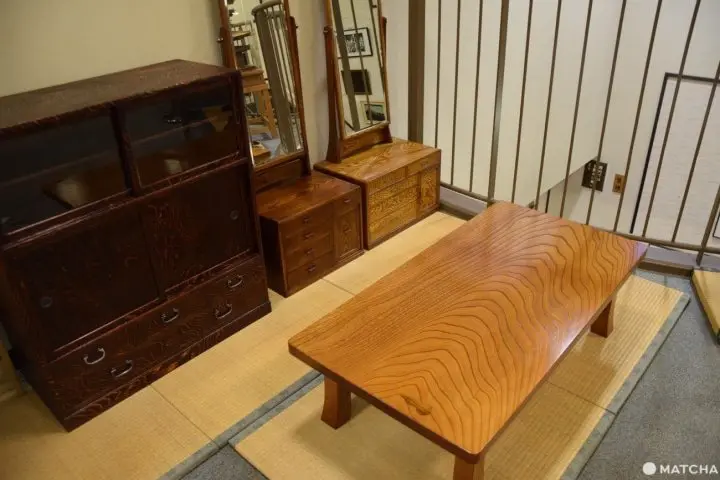Edo Taito Traditional Crafts Center: See Japan's Artisan Crafts in Asakusa

Edo Taito Traditional Crafts Center is a museum with free admission in Asakusa. The facility introduces Japan's artisan crafts through exhibitions and demonstrations by professionals. We introduce some of the traditional crafts featured here and tips on how to enjoy your visit.
See Tokyo's Traditional Crafts for Free!

The central part of Tokyo is split into 23 wards in total. Tait ward, where Asakusa is located, is the smallest ward but is the place where the most traditional crafts and artisan studios are gathered in Tokyo.
In such a craftsmanship-centered neighborhood as Asakusa, there is an establishment where visitors can see displays of Japan's traditional crafts. This is the Edo Taito Traditional Crafts Center, which we will introduce in this article.
Edo Taito Traditional Crafts Center - Located Near Sensoji Temple

The Edo Taito Traditional Crafts Center is located within Hisago-dori Shopping Street, which is located right near Sensoji Temple and the Asakusa Hanayashiki amusement park.
Originally, “Edo” was Tokyo’s old name, used until around 150 years ago. The arts and crafts history that is protected even now in the Taito ward has lasted since the era called the Edo period (1603-1868).
You can drop by this facility while enjoying a stroll around Asakusa.
Appreciate Japan's Artisan Crafts

The first floor is a lobby that includes an information desk, while the second floor is an exhibition room with displays of traditional arts and crafts.


We will introduce a few of the artisan crafts that we'd like you to see at least once while traveling in Japan.
Edo Kiriko Glassware

Edo Kiriko is a type of glassware said to have been established in the Nihonbashi area of Tokyo during the late Edo Period (1603-1868). The patterns are carved on the surface of a multi-layered glass, so the users can enjoy both the transparency of the glass and the beautiful design.
Because of its delicate beauty and high craftsmanship, Edo Kiriko glassware has been recognized as one of Tokyo's traditional craftworks in 1985, and as one of Japan's traditional crafts in 2002.
At the Edo Taito Traditional Crafts Center, you can see several types of Edo Kiriko glassware.
Edo Sashimono

This is a type of furniture called sashimono. Asakusa, which has been densely populated since ancient times, is the place where this type of furniture was developed.
In Kyoto, there is a type of furniture called kyo-sashimono, which has elaborate designs carved into it, but Edo Sashimono items have different characteristics.

Edo Sashimono’s pure design uses the wood grain, and isn’t particularly decorated with carvings or other such ornaments. The simpler it is, the more tasteful it becomes. This handicraft has many fans even today.
Copper Crafts

These beautiful, shiny cups and pots are copper crafts made of beaten sheet copper. The small, fine indentations on the outside of the receptacle are proof that the sheet copper is all hammered by hand by the craftsmen.
Mikoshi Crafts

Asakusa boats traditional festivals like Sanja Matsuri. What springs to mind when one thinks of festivals is the mikoshi (portable shinto shrine).
Hence, in Asakusa, there are also artisans who work on crafting gorgeous ornaments for mikoshi.
The model of a five-storied pagoda seen above was made by a mikoshi craftsman using his techniques.

If you look up close, you can notice the elaborate details. This type of craftsmanship is essential to Japan's festivals.
Files

While they do not have the showiness of works of art, these files (yasuri) are very interesting. Although they are merely instruments for filing and polishing, for some reason there are lots of different types on display.

The long, thin file in the middle of the photo is used for the mounting of a Japanese sword, called a katana no tsuba. The tsuba, or mounting, is an ornamental part used to partition the grip of the Japanese sword and its edge.

This file in the shape of a propeller is used for the polishing of a shoe heel.

This file is used for the installation of the straps on Japanese sandals, called geta.
As this is a neighborhood where craftsmen are gathered, it was developed both as a craftsman’s tool and as a handicraft.
Demonstration and Workshops by Artisans

Every Saturday and Sunday, between the tatami mats of the 1st floor, there is a traditional arts and crafts stage show held by the craftsmen.
For those who want to watch the craftsmen showcase techniques in person, please stop by on the weekend!
Fascinated by Japan's Traditional Crafts? Check out the Souvenir Shop


There are traditional arts and crafts made by hand by the craftsmen that are the same as the exhibition items being sold at the first floor counter.

If you were fascinated by the exhibition on the second floor, how about buying some traditional craft items here? If you find anything you fancy, go ahead and buy it!
At Edo Taito Traditional Crafts Center, they also hold auctions, where they knock down the prices of the second-floor exhibition items, and a handicraft classroom where you can experience making crafts for yourself! As the exhibitions are held irregularly, it might be difficult for travelers to make arrangements, but if the timing is right you should definitely give it a go!
Edo Taito Traditional Crafts Center
Address: 2-22-13 Asakusa, Taito, Tokyo (within Asakusa Hisago Avenue Shopping District)
Hours: 10:00–20:00 (*the stage show held by the craftsmen is held at 11:00–17:00)
Other Languages: English
Phone Number: +81(0)3-3842-1990
Website: Edo Taito Traditional Crafts Center
Hotels near Edo Taito Traditional Crafts Museum
MATCHAで編集やってます植松です。87世代。












































![[2026] Top 5 Strawberry Picking Spots in Tokushima, Naruto| Farms and Access Guide for January to May](https://resources.matcha-jp.com/resize/720x2000/2025/03/06-227165.webp)
![[Yamanashi/ Hokuto City] 4 Hot New Spots Opening in 2026](https://resources.matcha-jp.com/resize/720x2000/2025/12/12-252747.webp)


